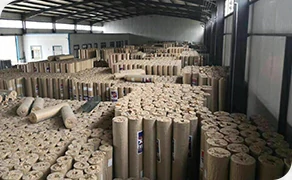 TEL:
+86-13102802206
TEL:
+86-13102802206
 Email:
fencenetting@china.com
Email:
fencenetting@china.com
 Language
Language
 TEL:
+86-13102802206
TEL:
+86-13102802206
 Email:
fencenetting@china.com
Email:
fencenetting@china.com
 Language
Language


Gabion Walls on Slopes A Sustainable Solution for Erosion Control
In the realm of civil engineering and landscape architecture, gabion walls have emerged as one of the most effective solutions for managing slopes and preventing soil erosion. These structures, composed of wire mesh baskets filled with stones, provide not only functional benefits but also an aesthetic enhancement to the landscape. Understanding the advantages and applications of gabion walls is essential for environmental sustainability and effective slope management.
What Are Gabion Walls?
Gabion walls are essentially retaining walls made from cages or baskets filled with rocks, stones, or other materials. They have been used for centuries, originating in ancient engineering practices. Today, they have gained acclaim due to their versatility, cost-effectiveness, and environmental benefits. The open structure of gabions allows water to flow through, reducing hydrostatic pressure and helping to prevent the build-up of water behind the wall. This characteristic makes them especially suitable for sloped terrains where runoff can be a significant issue.
Benefits of Gabion Walls on Slopes
1. Erosion Control One of the primary functions of gabion walls is to stabilize slopes and prevent soil erosion. When placed along a slope, gabion walls absorb the energy of rainwater and surface runoff, minimizing soil displacement. This is crucial in areas prone to heavy rainfall, where standard retaining walls might fail under increased water pressure.
2. Drainage Management Unlike traditional solid walls, gabion walls allow for drainage. The permeable structure helps mitigate water pooling, which can lead to slope failure. Properly designed gabion walls integrate drainage systems that enhance their performance in managing water flow.
3. Ecological Benefits Gabion walls can be designed to blend seamlessly into the natural environment. By filling the cages with local stones and integrating vegetation, these walls can promote biodiversity. Plants can grow in and around the gabion, further stabilizing the soil and providing habitat for various wildlife.

4. Cost-Effectiveness Gabion walls are often more affordable to construct compared to conventional concrete or masonry walls. The materials can typically be sourced locally, reducing transportation costs. Additionally, their installation requires less heavy machinery, making them more accessible for remote or difficult-to-reach areas.
5. Aesthetic Appeal Aesthetic considerations are becoming increasingly important in modern construction. Gabion walls can be visually appealing when designed thoughtfully. By incorporating different types of stones and plants, they can enhance the beauty of a landscape, making them a popular choice in parks, gardens, and public spaces.
Considerations for Implementation
While gabion walls offer numerous benefits, careful planning and design are essential for effective implementation. Factors such as the type of soil, slope steepness, and local climate conditions must be considered to ensure stability and longevity. Consulting with geotechnical engineers or landscape architects familiar with gabion technology can provide valuable insights.
Additionally, ongoing maintenance is necessary to monitor the integrity of the wire mesh and the condition of the stones, especially in areas subject to high water flow or heavy traffic.
Conclusion
Gabion walls represent a sustainable and effective solution for managing slopes and controlling erosion. Their multifaceted benefits—ranging from ecological advantages to cost savings—position them as a preferred choice for modern engineering and landscaping projects. As global climate patterns shift and the need for resilient infrastructure grows, gabion walls will undoubtedly play an increasingly significant role in sustainable development practices. Embracing such solutions is not just about reinforcing structures; it’s about harmonizing human activity with the natural world.